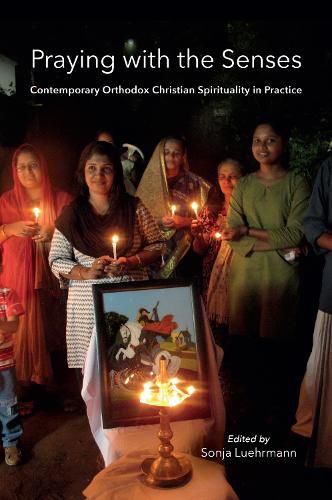Readings Newsletter
Become a Readings Member to make your shopping experience even easier.
Sign in or sign up for free!
You’re not far away from qualifying for FREE standard shipping within Australia
You’ve qualified for FREE standard shipping within Australia
The cart is loading…






How do people experience spirituality through what they see, hear, touch, and smell? Sonja Luehrmann and an international group of scholars assess how sensory experience shapes prayer and ritual practice among Eastern Orthodox Christians. Prayer, even when performed privately, is considered as a shared experience and act that links individuals and personal beliefs with a broader, institutional, or imagined faith community. It engages with material, visual, and aural culture including icons, relics, candles, pilgrimage, bells, and architectural spaces. Whether touching upon the use of icons in age of digital and electronic media, the impact of Facebook on prayer in Ethiopia, or the implications of praying using recordings, amplifiers, and loudspeakers, these timely essays present a sophisticated overview of the history of Eastern Orthodox Christianities. Taken as a whole they reveal prayer as a dynamic phenomenon in the devotional and ritual lives of Eastern Orthodox believers across Eastern Europe, the Middle East, North Africa, and South Asia.
$9.00 standard shipping within Australia
FREE standard shipping within Australia for orders over $100.00
Express & International shipping calculated at checkout
How do people experience spirituality through what they see, hear, touch, and smell? Sonja Luehrmann and an international group of scholars assess how sensory experience shapes prayer and ritual practice among Eastern Orthodox Christians. Prayer, even when performed privately, is considered as a shared experience and act that links individuals and personal beliefs with a broader, institutional, or imagined faith community. It engages with material, visual, and aural culture including icons, relics, candles, pilgrimage, bells, and architectural spaces. Whether touching upon the use of icons in age of digital and electronic media, the impact of Facebook on prayer in Ethiopia, or the implications of praying using recordings, amplifiers, and loudspeakers, these timely essays present a sophisticated overview of the history of Eastern Orthodox Christianities. Taken as a whole they reveal prayer as a dynamic phenomenon in the devotional and ritual lives of Eastern Orthodox believers across Eastern Europe, the Middle East, North Africa, and South Asia.